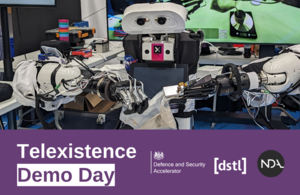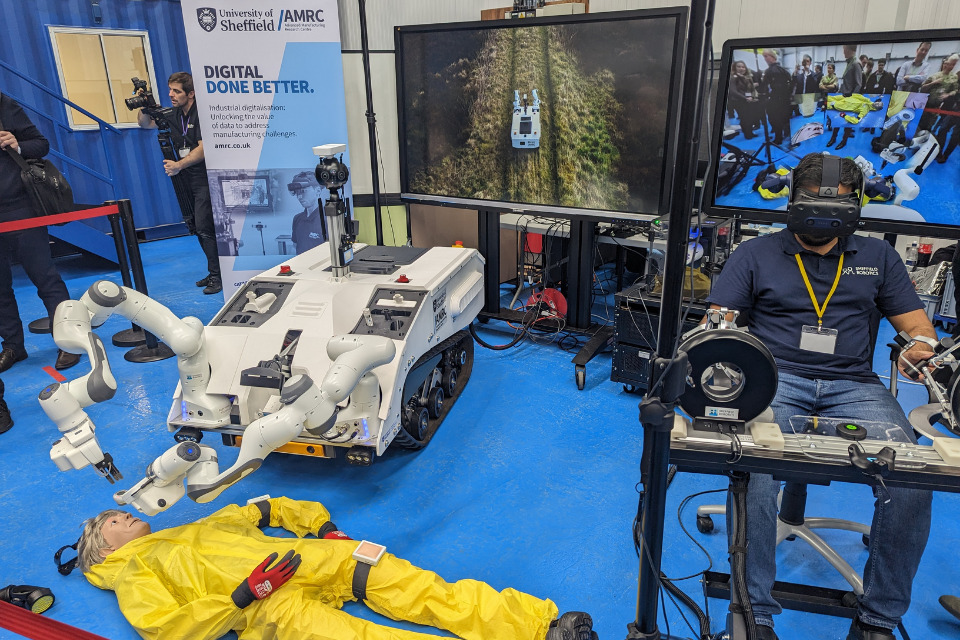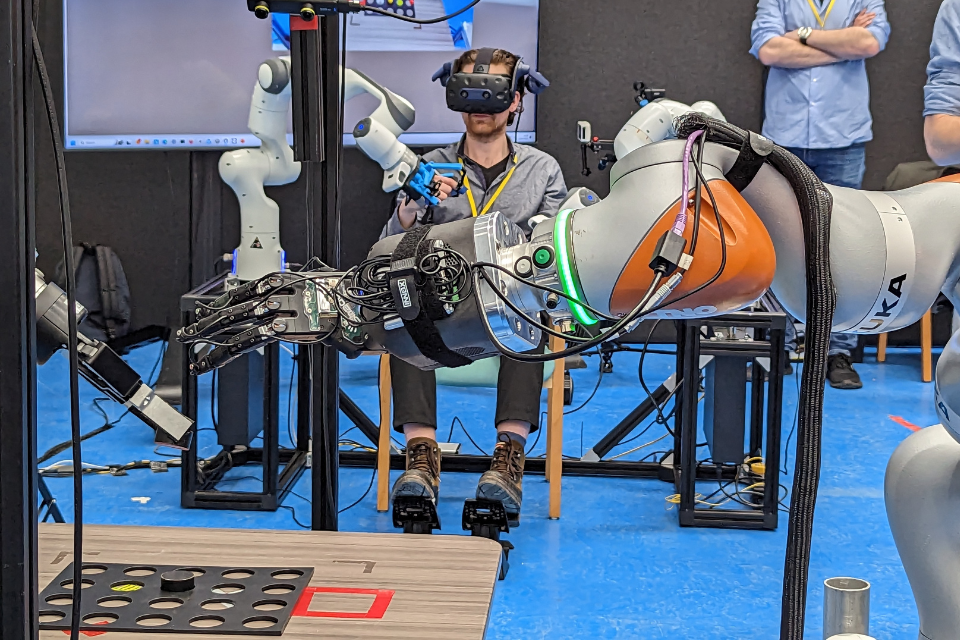Game changing telexistence technologies showcased at the BattleLab
Three exciting telexistence technologies demonstrated at the BattleLab as a result of the Telexistence: Phase 2 competition

- Three novel telexistence technologies were showcased at the Telexistence: Phase 2 demonstration event at the BattleLab
- Telexistence: Phase 2 sought innovations that will help give those working in hazardous environments the capability to undertake tasks without being physically present
- The event demonstrated how telexistence technology can add value to the nuclear decommissioning, defence and security communities by reducing risk to personnel and also increasing the efficiency of operations
On April 25 2023, the Nuclear Decommissioning Authority (NDA), Defence Science and Technology Laboratory (Dstl), and Defence and Security Accelerator (DASA) held the Telexistence: Phase 2 demonstration event at the BattleLab, one of the Ministry of Defence’s innovation acceleration facilities.
The event brought together partners on national and international nuclear decommissioning, defence and security stakeholders and potential end-users, to showcase three novel telexistence technologies funded through a two phase £2.3million innovation competition run by DASA on behalf of joint funders, Dstl and the NDA.
The competition sought innovations to help give those working in hazardous environments the ability to undertake tasks without being physically present, helping decrease risk and reduce the logistical burden associated with dangerous operations.
This is achieved using remotely operated systems, and the integration of telepresence (allowing a human operator to experience the sensation of self-presence in a remote environment), robotics, wearable assistive technologies, and haptic feedback and sensors which transmit sensory information from the remote environment to the person operating the device.
The demonstrations showcased how the innovations can address challenges in several use cases including specialist nuclear decommissioning tasks, Explosive Ordnance Disposal (EOD), and Defence and Security Medical applications. The event was successful in highlighting the potential of these groundbreaking technologies.
Game changing telexistence technologies showcased at the BattleLab
Andrew Gray, the NDA’s Innovation Delivery Manager, said:
“We are using innovation and technology to overcome the challenges of identifying and removing nuclear waste from our sites, so we can store it safely and eventually permanently dispose of it.
“It’s our aim to reduce decommissioning activities carried out by humans in hazardous environments by 50% by 2030. This collaboration could revolutionise our ability to access contaminated areas, which are unsafe or impossible for humans to enter.
“Working with DASA and Dstl enables us to grow our innovation capability, access a wider network of partners, share learning and provides value for money. We’re really encouraged to see such innovative solutions being put forward.”
The innovations showcased at the demo day were developed by MediTel, Bettering Our Worlds and TNO.
MediTel - University of Sheffield AMRC and Sheffield Robotics
This project was delivered by the University of Sheffield Advanced Manufacturing Research Centre (AMRC) in collaboration with Sheffield Robotics.
They were funded to develop a complete telexistence system for medical care on the battlefield, the solution comprises a robotically controlled tracked Uncrewed Ground Vehicle (UGV), which features two tool boxes and two robotic arms which are able to grasp and effectively operate tools, such as blood pressure cuffs, auto-injectors and thermometers.
It has two modes, a driving mode and triage mode and is controlled during both modes by a pair of haptic devices which transmit sensory information from the remote environment to the person operating the device.

MediTel - University of Sheffield AMRC and Sheffield Robotics showcasing their innovation at the demonstration event
TEL MED and TEL ND - Bettering Our Worlds (BOW)
This project was delivered by Bettering Our Worlds (BOW, formerly Cyberselves), a spin out company from Sheffield Robotics. BOW’s solution aims to tackle both nuclear decommissioning use cases such as handling radioactive materials, and also, medical use cases to perform casualty triage on the battlefield.
At the demo day, BOW showcased their solution comprising of a robot with omnidirectional wheels, adjustable height and long arms able to hold objects. The robot is controlled from a cockpit which has a pair of robotic arms that are configured to provide resistive force feedback.

BOW showcasing their innovation at the demonstration event
TNO
This project was delivered by TNO, SenseGlove and University of Twente. TNO was funded to develop a complete telexistence system that can effectively perform nuclear decommissioning tasks such as handling radioactive or other hazardous materials.
The innovation comprises two robotic arms that are controlled by an operator, utilising gloves that provide accurate finger tracking and are able to manipulate objects. The operator uses the robotic arms to control a pair of remote robotic arms that are capable of lifting heavy payloads. The innovation also has mounted audio visual equipment, to provide depth perception and object detection.

TNO showcasing their innovation at the demonstration event
Learn more about Telexistence Phase 2 here.